Master the Art of Cooking Vegetables Without Them Becoming Mushy
Cooking vegetables to perfection without turning them mushy is a culinary skill that requires a blend of precise techniques, optimal timing, and the right kitchen tools. To achieve that sought-after texture, it’s essential to comprehend the distinctive qualities of each vegetable, the most effective cooking methods for them, and how to effectively manipulate cooking conditions to achieve a delightful crunch. This comprehensive guide explores the fascinating realm of vegetables, providing you with the knowledge and techniques necessary to excel in preparing them while preserving their texture and enhancing their flavour.
Selecting Vegetables That Will Maintain Their Crispness During Cooking
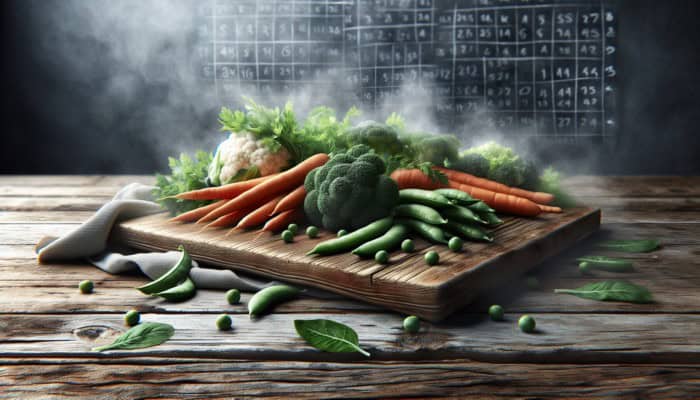
To ensure you achieve the desired texture in your dishes, the very first step is to choose the right vegetables. Not all vegetables are equally resilient, and recognising which varieties hold up better during various cooking processes can dramatically influence your culinary results.
Top Vegetables That Excel at Maintaining Their Crispness
Certain vegetables possess inherent qualities that allow them to retain their crunchiness more effectively than others. For example, carrots, broccoli, and snap peas are renowned for their robust texture when cooked correctly. These vegetables have high water content coupled with structural integrity, enabling them to endure heat without succumbing to mushiness. In contrast, softer vegetables like zucchini and eggplant can easily lose their firmness if not cooked thoughtfully. Understanding which vegetables boast greater resilience will inform your culinary choices and cooking techniques.
Guidelines for Selecting Fresh Vegetables for Optimal Cooking
Freshness is vital in retaining the texture of vegetables throughout the cooking process. Look for vegetables that boast vibrant colours, a firm texture when touched, and are free from blemishes or soft spots. For example, green beans should snap audibly when bent, while brussels sprouts should feel heavy and compact. When shopping for fresh produce, consider visiting local farmers' markets or organic grocery stores, as they typically offer fresher options than standard supermarkets, enhancing your likelihood of achieving that perfect crunch.
Seasonal Vegetables That Maintain Their Texture While Cooking
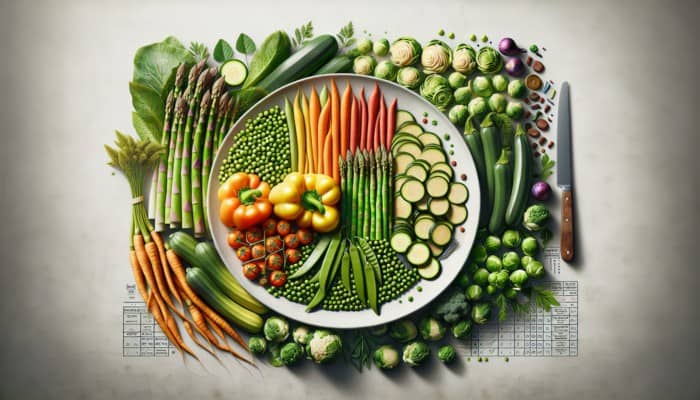
The seasonality of vegetables significantly influences their quality and overall taste. During spring, opt for asparagus and peas, both of which retain their texture beautifully when cooked correctly. Summer brings an abundance of bell peppers and corn, while autumn features hearty options like cauliflower and carrots. Cooking with seasonal produce not only enhances the flavour profile of your meals but also guarantees that you're utilising vegetables at their peak freshness.
Effective Cooking Methods to Prevent Vegetables from Becoming Mushy
The cooking method you select can make a significant difference in the final texture of vegetables. Certain techniques are better suited for preserving the original texture, ensuring that they remain crisp and enjoyable to eat.
Steaming: A Gentle Technique for Cooking Vegetables
Steaming is a highly effective method for cooking vegetables without sacrificing their crunch. This gentle cooking technique employs steam to cook the vegetables, allowing them to maintain both their vibrant colour and texture. The secret to successful steaming lies in precise timing—oversteaming can lead to that dreaded mushiness. Aim for a steaming duration of approximately 4-7 minutes for most vegetables, checking for doneness regularly. Utilising a steaming basket can facilitate even cooking, resulting in a vibrant, nutrient-rich dish.
Roasting Vegetables for Enhanced Flavour and Texture
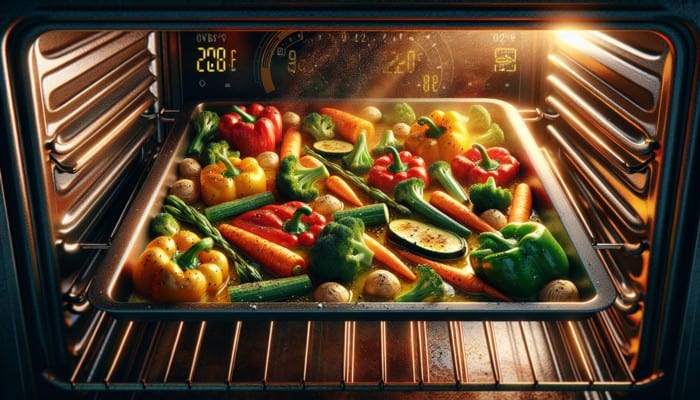
Roasting is another exceptional technique for achieving vegetables that are free from mushiness. The high, dry heat of the oven caramelises the natural sugars found in vegetables, intensifying their flavours while keeping them firm and crisp. Be sure to preheat your oven to a high temperature, around 220°C (425°F), and cut your vegetables into uniform pieces to guarantee even cooking. Toss the vegetables in a small amount of olive oil, season with salt and pepper, and roast them until they are tender yet still crisp, usually around 20-30 minutes.
Quick and Effective Sautéing Techniques for Crisp Vegetables
Sautéing is a rapid cooking method that can yield perfectly crisp vegetables when executed correctly. The key is to use a hot pan and a small amount of oil to swiftly sear the vegetables. Begin by heating your pan until it’s hot, then add the oil followed immediately by your chopped vegetables. Stir frequently and cook for just a few minutes to ensure they retain their vibrant colour and crunch. This technique works wonders for bell peppers, broccoli, and asparagus.
Blanching and Shocking Techniques for Preserving Vegetable Crunch
Blanching is an outstanding technique for retaining the colour and texture of vegetables. This method involves quickly boiling the vegetables before plunging them into ice water. The sudden temperature change halts the cooking process, locking in crunchiness. Blanching is particularly effective for vegetables like green beans and broccoli, which can later be sautéed or incorporated into salads for an extra crunch.
Timing and Temperature: Essential Factors for Crisp Vegetables
Understanding the significance of timing and temperature is crucial in your pursuit of preventing mushiness in cooked vegetables. Each vegetable has an ideal cooking time and temperature range that can greatly influence the final result.
Recommended Cooking Times for Various Vegetables
Cooking times for vegetables can vary significantly. For instance, carrots may require approximately 6-8 minutes to steam, while spinach only takes around 2-3 minutes. Keeping a handy list of cooking times for your favourite vegetables can streamline your meal prep process, ensuring that everything comes together seamlessly without overcooking.
Temperature Control for Perfectly Cooked Vegetables
Maintaining control over cooking temperatures is essential for achieving perfectly cooked vegetables. Cooking at excessively high temperatures can char the exterior while leaving the inside undercooked, leading to uneven textures. On the other hand, cooking at too low a temperature can result in limp vegetables. For most stovetop methods, a medium-high heat is ideal, while oven roasting typically requires a higher temperature to achieve that caramelisation without compromising texture.
How to Check Vegetable Doneness Without Overcooking
Testing for doneness without overcooking vegetables is a vital culinary skill. For most vegetables, a fork or knife should easily pierce through without much resistance, indicating they are cooked yet still firm. If you’re uncertain, taste testing is a reliable method—remove a piece from the heat and take a quick bite. Remember that vegetables continue to cook even after being removed from heat, so it’s wise to err on the side of caution.
Adjusting Cooking Times for Altitude and Humidity Variations
Both altitude and humidity can significantly affect cooking times. At higher altitudes, water boils at lower temperatures, meaning vegetables may require longer to cook thoroughly. Conversely, in humid environments, they may retain more moisture, necessitating adjustments in cooking times. It’s essential to take these factors into account and adjust your methods accordingly to achieve consistent culinary results.
Essential Tools and Gadgets for Maintaining Vegetable Texture
Equipping yourself with the right tools can significantly aid in achieving optimal texture while cooking vegetables. Various gadgets can enhance your cooking experience and improve your outcomes.
Utilising Steamers and Racks to Prevent Direct Heat Contact
Steamers are invaluable tools for cooking vegetables without turning them mushy. They allow for even cooking while preventing vegetables from sitting in water, which can lead to sogginess. Consider investing in a tiered steamer or a bamboo steamer, which can accommodate various types of vegetables simultaneously, saving time and effort in your cooking process.
The Benefits of Air Fryers for Cooking Non-Mushy Vegetables
Air fryers have gained immense popularity due to their ability to create crispy textures without the need for excessive oil. These appliances work by circulating hot air around the food, producing a crispy exterior while keeping the interior tender. This method is especially suited for vegetables like zucchini fries and sweet potato wedges, allowing you to indulge in your favourite dishes without compromising on health or texture.
Selecting Appropriate Pots and Pans for Cooking Vegetables
Choosing the right cookware can greatly affect how your vegetables cook. Lightweight pans, such as skillets or sauté pans, heat up quickly and provide even cooking, which is essential for achieving that crisp texture. Non-stick options can also be advantageous, as they require less oil and make flipping and stirring easy.
Innovative Kitchen Tools for Achieving Perfect Vegetable Texture
In addition to the basics, several innovative kitchen tools can help you achieve impeccable vegetable texture. Consider investing in a mandoline slicer for even cuts or a vegetable peeler that can create ribbons of zucchini or carrots. These tools not only streamline preparation but also ensure uniform cooking, which is crucial for preventing mushiness.
Seasoning and Flavouring Techniques That Preserve Vegetable Texture
Once you’ve cooked your vegetables to perfection, the next step is to season them effectively without compromising their texture. Achieving this balance requires a careful approach to flavours and techniques.
Seasoning Vegetables to Enhance Their Natural Flavours Without Overpowering
The key to seasoning vegetables is to enhance their natural flavours without overwhelming them. Start with a light sprinkle of salt and pepper, allowing the inherent taste of the vegetables to shine through. Gradually incorporate additional seasonings, tasting as you go, to strike the right balance that complements without overshadowing their texture.
Incorporating Herbs and Spices Without Compromising Crispness
Herbs and spices can elevate your vegetable dishes, but their use should be strategic. Fresh herbs like basil or parsley should be added towards the end of the cooking process to prevent wilting, while dried spices can be introduced earlier. This method ensures that the flavours infuse without compromising the vegetables' crispness.
Choosing Marinades and Dressings That Complement Vegetable Texture
Marinating vegetables can add depth and flavour, but it’s crucial to apply the right approach. Opt for lighter marinades that won’t weigh down the vegetables, such as a simple mixture of olive oil, lemon juice, and herbs. Allow them to marinate briefly before cooking to avoid excessive moisture absorption, which can lead to a mushy texture.
Balancing Flavours While Preserving Vegetable Crunch
Balancing flavours while maintaining texture requires thoughtful consideration of the ingredients you utilise. Acidic components, such as vinegar or citrus juice, can brighten the dish without compromising texture. Pair these with hearty vegetables that can withstand bold flavours, ensuring that each bite remains crunchy and delicious.
Proper Storage Techniques for Vegetables to Ensure Cooking Success
Effective storage is crucial to maintaining the quality of your vegetables, which ultimately impacts their texture during cooking. How you store vegetables can significantly affect their cooking performance.
Best Practices for Storing Fresh Vegetables
To keep your vegetables fresh and crisp, store them in a cool, dry place, preferably in the fridge. Use perforated plastic bags or containers to promote airflow, preventing moisture accumulation that can lead to wilting. For leafy greens, consider wrapping them in a damp paper towel before placing them in a bag to preserve their crispness.
How to Store Cooked Vegetables to Maintain Their Texture
When storing cooked vegetables, careful attention is required to prevent them from becoming mushy. Allow them to cool completely before transferring them to an airtight container. If possible, store them without added moisture or sauces, as these can result in sogginess. Reheating in a hot pan can help restore some of the texture lost during storage.
Freezing Vegetables for Future Use While Preserving Quality
Freezing vegetables is an excellent method for preserving their quality and texture for later use. Blanching them briefly before freezing helps maintain their colour and crunch. Utilize airtight freezer bags or containers, ensuring to remove as much air as possible to prevent freezer burn. When you’re ready to use them, cook them directly from the freezer, adjusting cooking times as necessary.
The Influence of Storage on Cooking Performance of Vegetables
The manner in which you store vegetables can significantly impact their cooking performance. Poor storage conditions can lead to moisture and nutrient loss, resulting in diminished flavour and texture. Understanding best practices for storage will ensure your vegetables remain in peak condition, ready to be transformed into delectable meals.
Addressing Common Challenges in Vegetable Cooking
Even the most experienced cooks encounter difficulties when preparing vegetables. Knowing how to troubleshoot these common issues can prevent your dish from becoming a culinary disappointment.
How to Fix Overcooked Vegetables
Overcooked vegetables often result from cooking at excessively high temperatures or for too long. To remedy this, consider sautéing them briefly in a hot pan with a small amount of oil, which can help restore some texture. Alternatively, you can incorporate overcooked vegetables into soups or purees, salvaging the dish without wasting any ingredients.
Managing Vegetables That Have Become Too Soft
Soft vegetables can be frustrating, especially when you aspire for a crunchy texture. If you discover your vegetables have turned soft, consider roasting them with a sprinkle of breadcrumbs or cheese to add some much-needed texture. Alternatively, blending them into a sauce or dip can mask their texture flaws effectively.
Reviving Vegetables That Have Lost Their Crunch
If you have vegetables that have lost their crunch, soaking them in ice water for a few minutes can help restore their texture. After soaking, pat them dry and give them a quick sauté or roast to regain some firmness. This technique can work wonders for celery and carrots.
Avoiding Common Mistakes When Cooking Vegetables
Steering clear of common pitfalls is crucial for achieving the ideal texture. One significant mistake is overcrowding the pan, which can lead to steaming instead of sautéing. Additionally, neglecting to season your vegetables properly can result in bland flavours. Always taste as you cook and make adjustments accordingly for the best outcomes.
Frequently Asked Questions
Which vegetables are best for retaining their texture when cooked?
Vegetables such as carrots, broccoli, and snap peas are excellent choices for retaining their texture. They possess structural integrity that allows them to remain crisp during cooking.
How can I avoid my vegetables becoming mushy?
To prevent mushiness, opt for quick cooking methods like steaming or sautéing, and ensure you avoid overcooking them. Always test for doneness at regular intervals.
Is steaming or roasting better for achieving crispness?
Both methods can yield crisp results; however, roasting enhances flavour through caramelisation, while steaming is gentler, preserving the natural texture and colour.
What are the recommended cooking times for different vegetables?
Cooking times vary; for instance, green beans take about 4-5 minutes to steam, while carrots may require 6-8 minutes. Always check for doneness.
How can I test if my vegetables are fully cooked?
You can test for doneness by piercing them with a fork. They should be tender yet firm. Tasting a piece is also an effective method to gauge readiness.
Can I store cooked vegetables without losing their texture?
Yes, cooked vegetables can be stored in airtight containers. Allow them to cool completely before sealing, and avoid adding moisture to maintain texture.
What’s the best strategy for reviving overcooked vegetables?
To revive overcooked vegetables, sauté them briefly in a hot pan with oil or incorporate them into soups or sauces for a flavourful solution.
How can I balance flavours without compromising crunch?
Utilise light seasonings and introduce fresh herbs towards the end of the cooking process. This enhances flavour without diminishing the vegetables’ crunch.
What should I avoid when cooking vegetables?
Avoid overcrowding the pan, overcooking, and neglecting proper seasoning. These mistakes can lead to bland flavours and undesirable textures.
Are there specific storage techniques for keeping fresh vegetables?
Store fresh vegetables in a cool, dry place, ideally in the fridge, utilising perforated bags to allow airflow and prevent moisture buildup.
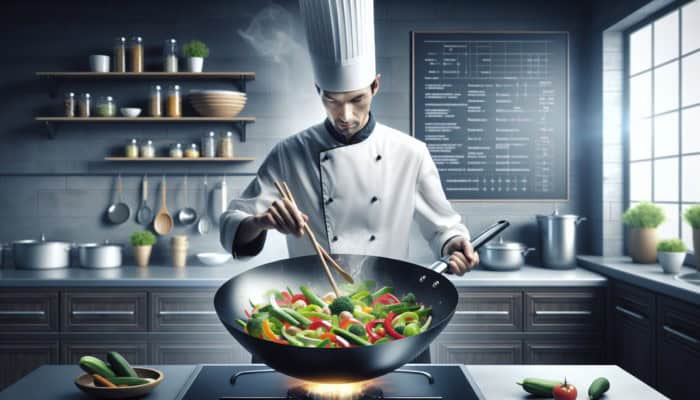

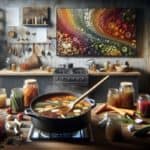
Ah, the eternal quest for perfectly cooked vegetables! It’s almost like trying to achieve that elusive balance in a yoga class—where you’re neither too rigid nor too floppy, lest you find yourself toppling over into a bowl of mushy broccoli. I can’t be the only one who’s had a paranoid relationship with the steamer basket, right? There’s a palpable fear of overdoing it and transforming a vibrant array of fresh veggies into what can only be described as a sad pile of green goo.
I get what you mean about that steamer basket—it’s like a culinary tightrope. One minute you’re gently coaxing the nutrients out of those vibrant veggies, and the next, bam! You’ve got a mushy mess. It’s all about timing, right?
“You’re definitely not alone in that veggie dilemma! If you’re looking for a foolproof way to keep those greens vibrant and delicious, check out this handy guide I put together—it’ll help you conquer that steamer basket fear!”
https://cookinggods.com/ChocolateHealth
I get that! The struggle with the steamer basket is all too real. It’s like we’re all trying to find that sweet spot between crunchy and soft. I’ve had my moments too—way too many times I’ve opened that lid expecting colorful veggies and instead had a sad, mushy mess staring back at me.
I hear you—it can be a real gamble with that steamer basket. One moment you’re feeling all gourmet, and the next you’re faced with what looks like an accidental soup. I’ve found that timing is everything; even just a minute or two can mean the difference between vibrant veggies and a sad mush bomb.
You’ve definitely hit on something that many of us can relate to—the delicate dance of cooking vegetables just right. It’s amusing how something as simple as a steamer basket can inspire a mix of admiration and anxiety. I’ve been there, standing by the stove, trying to figure out the perfect timing while keeping one eye on the clock and the other on the veggies, feeling like I’m walking a tightrope.
“Ah, the struggle is real! If you’re ready to conquer your veggie-cooking fears and elevate your meals, check out these game-changing tips!”
https://cookinggods.com/SmoothieRecipes
I really appreciate the focus on selecting the right vegetables to maintain their crispness. I’ve found that experimenting with lesser-known varieties, like romanesco or rainbow carrots, adds both texture and visual appeal to dishes. When it comes to cooking techniques, I’m a huge fan of blanching followed by shocking in ice water. This not only preserves the vibrant colors but also helps retain that delightful crunch.
I appreciate the focus on selecting the right vegetables for maintaining texture—I’ve found that certain varieties can really make or break a dish. For instance, when stir-frying, I tend to choose snap peas or green beans over softer options like zucchini, which can easily turn mushy. It’s interesting how the cooking method can drastically alter the outcome; I often experiment with techniques like blanching to partially cook veggies before finishing them off in a pan.
You’ve hit the nail on the head when it comes to texture and the role it plays in a dish. Choosing snap peas or green beans really does keep that satisfying crunch, especially in stir-fries. And I totally get what you mean about zucchini—it can go from crisp to mush in what feels like seconds.
The discussion of achieving the perfect texture in cooked vegetables is indeed a fascinating aspect of culinary arts. Your emphasis on selecting the right vegetables as a foundational step resonates with my own experiences in the kitchen. I often find that even the same vegetable can yield very different results depending on how it’s prepared. For instance, I’ve noticed that asparagus can quickly turn mushy if boiled, but when roasted at a high temperature for a short period, it retains that delightful crunch while developing a rich, caramelized flavor.